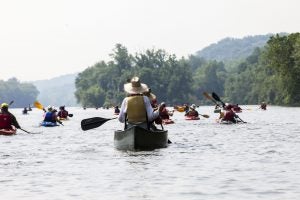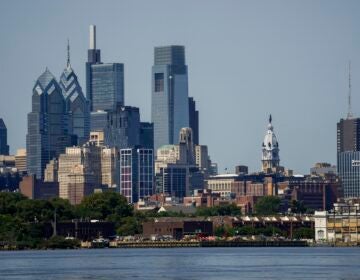Balancing flood protection and fun in Pa.’s river towns
Can you have flood protection and river access? One city found a way — at a steep price.
Listen-

-
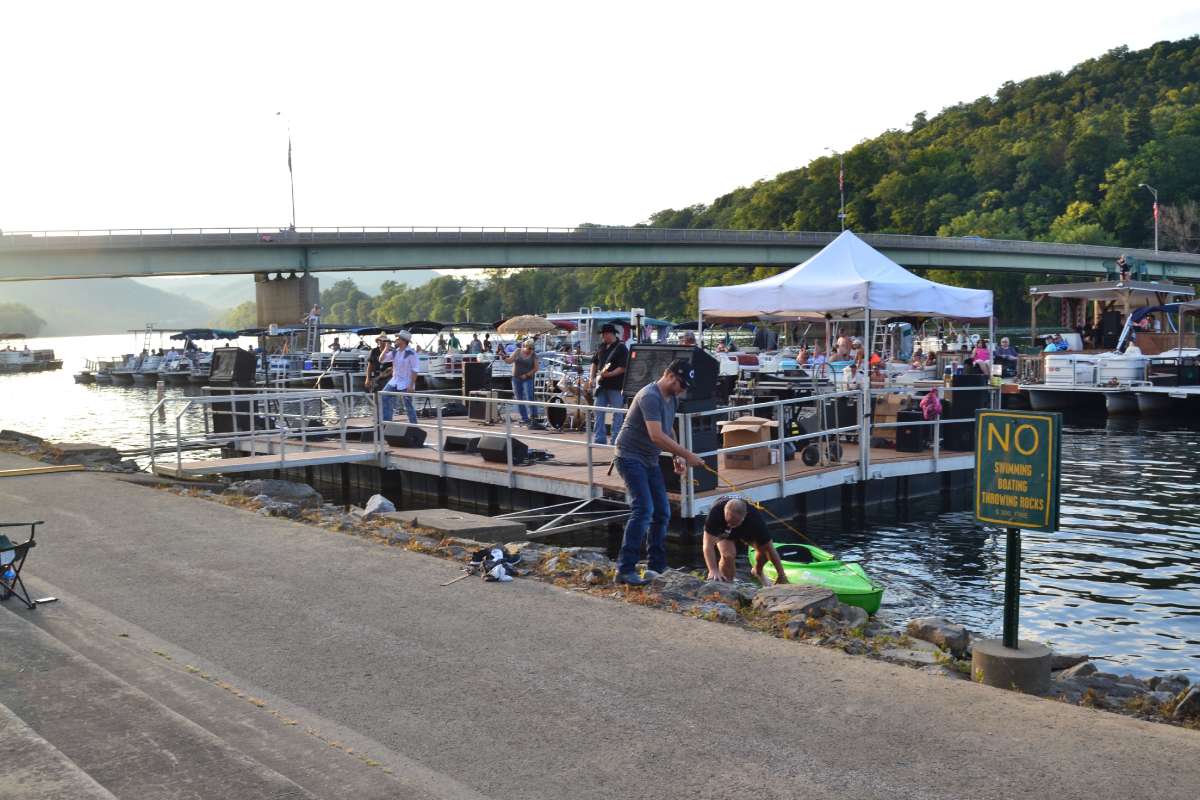
There are concertgoers in the water and on dry land. And some, like this kayaker, do a little bit of both. (Eleanor Klibanoff/WPSU)
-

The city beach isn't very popular during the concerts, but on hot summer days, residents say it gets packed with swimmers. (Eleanor Klibanoff/WPSU)
-

This photo from 2004 shows how high the flood waters got after Hurricane Ivan. Lock Haven sits at the lower end of the watershed, so they don't usually see the floods until a few days after the rain. Here, it's a beautiful day, except for the flooded river behind the levee. (Rich Marcinkevage, City of Lock Haven
-
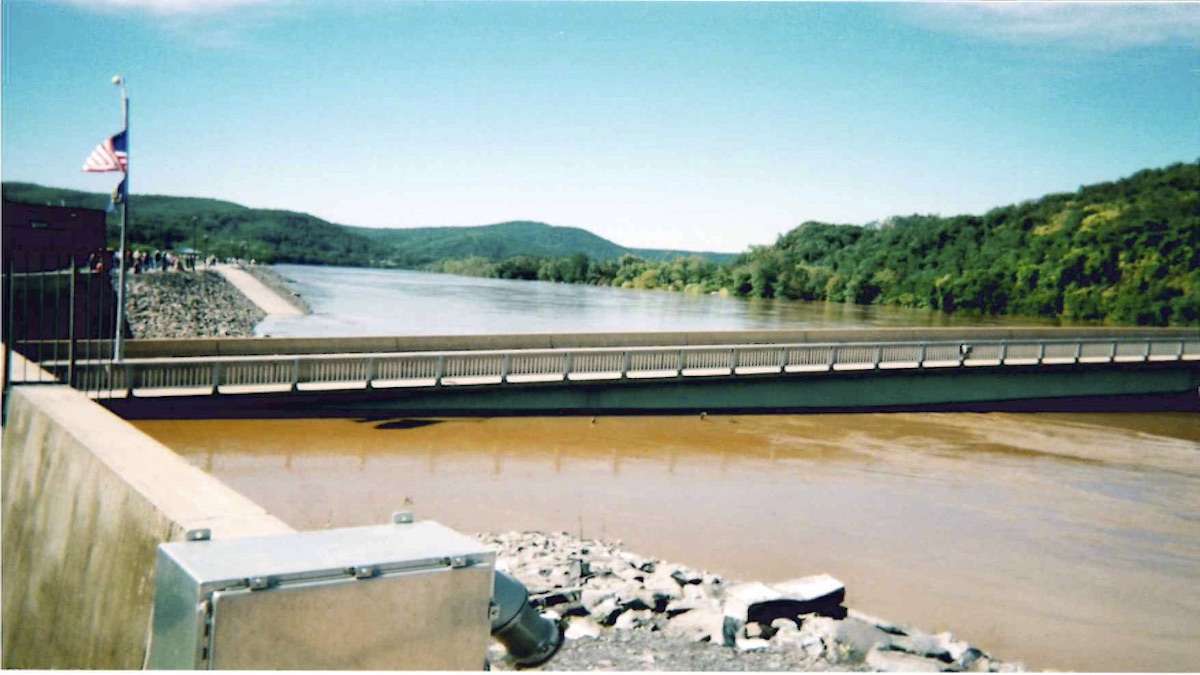
After Hurricane Ivan in 2004, the floodwaters came within six feet of the top of the levee. (Rich Marcinkevage, City of Lock Haven)
-
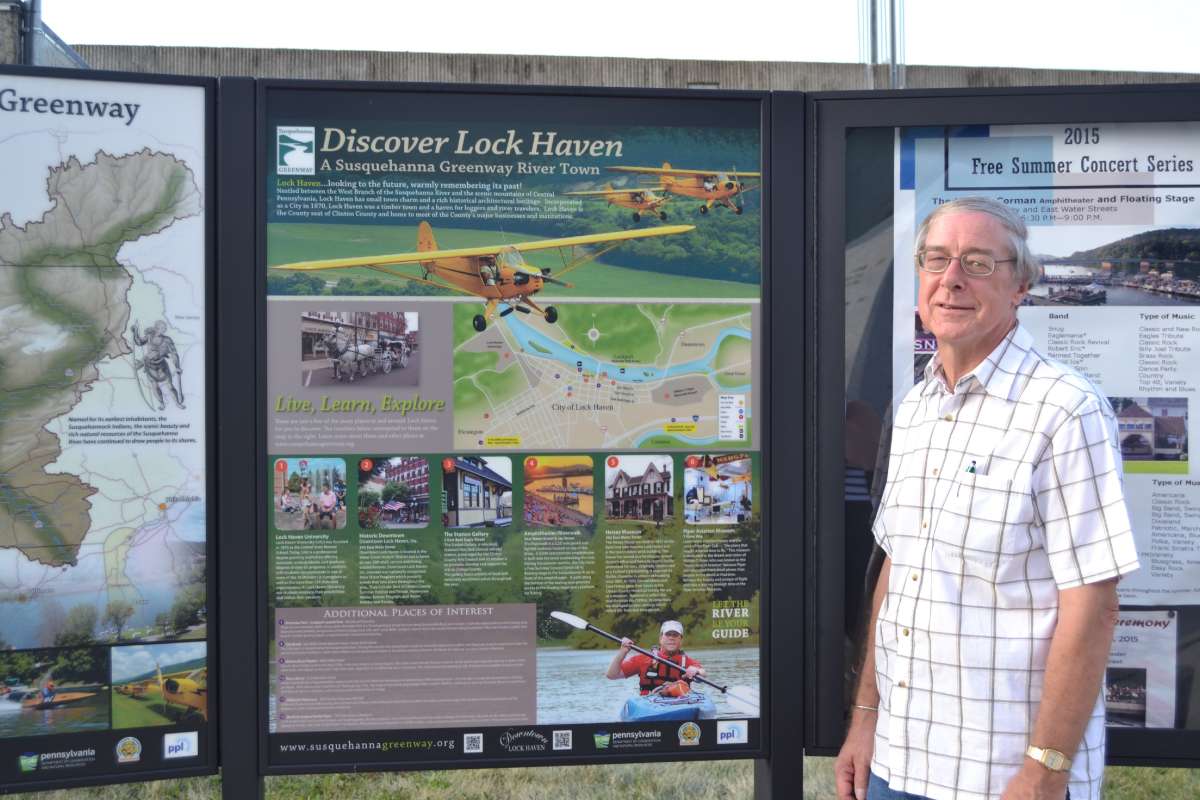
City Manager Rich Marcinkevage says all the river access makes Lock Haven a desirable place to visit, or stay and raise a family. (Eleanor Klibanoff/WPSU)
-

It may have cost $80 million and taken 20 years to finish, but the flood protection has paid off so far for the city of Lock Haven. (Eleanor Klibanoff/WPSU)
It’s Sunday night in Lock Haven, Pa., which means it’s time for another free outdoor concert in the J. Doyle Corman Amphitheater. This week, it’s a country band, and there are close to a hundred people in the audience. But city planner Leonora Hannagan says this is nothing compared to some weekends.
“When we had the Eagles [tribute band], people called me at the beginning of the summer, asking for hotel and restaurant information,” she says. “They come and make a whole weekend out of it.”
The amphitheater, which has a floating stage, is a big asset for Lock Haven. It gives people a reason to visit, stay and spend.
But the real value of this space has nothing to do with the theater itself. It has to do with what the theater is built into — a levee system that protects the city from flooding.
A small monument outside the amphitheater reads: “through the years, Lock Haven has suffered from floods, 18 of which were over 25 feet. Those floods have left the people of Lock Haven robbed of their homes, possessions and means of life.”
Lock Haven isn’t alone — there are many river towns and cities in Pennsylvania. And there are many responses to flooding.
Some towns, like Williamsport, intervened early. After the flood of 1936, the town got federal funding to build a levee system, and hasn’t been flooded since. But back then, the Army Corps of Engineers was far stricter about what could or couldn’t be built into the levee, and the city lost their river access in the process.
Other places put in floodwalls. That means giving up riverfront property, and river views. But after the devastating flood of 1972 didn’t touch the town of Sunbury, residents spray painted messages of gratitude on their wall.
And then there are the towns that don’t have permanent flood protection. They deal with the consequences of flooding — the Susquehanna floods once every seven years, on average — but they also don’t lose their riverfront amenities.
Historically, there has always been a trade-off between river access and flood protection. But Lock Haven, a city of 10,000 residents, found a way to offer both. The levee system has an amphitheater, a three-mile riverwalk, a city beach and lots of boat access. It also protects the city.
“Since this was finished in 1994, we’ve had two floods that would have put about six feet of water in this area. We didn’t have any damage,” says Rich Marcinkevage, Lock Haven’s city manager. “One flood, the water came up to six feet below the top of the levee. It was a beautiful, sunny day, and if you were standing on the street, you’d have no idea there was a flooded river just over the levee.”
But there is a reason that most small cities don’t offer both flood protection and recreation in one: this project cost $80 million and took 20 years to complete. It was so controversial, Marcinkevage says, that the mayor wore a bulletproof vest to the final City Council vote.
It wasn’t just the cost that had people alarmed. Lock Haven is a river town — and always has been. Bob Yowell, who was the first director of Lock Haven’s Flood Protection Authority, remembers the arguments that gripped the community.
People said, “it’ll be ugly, it will cut us completely off from the river, we won’t have our historical relationship with the river anymore.”
Adding more river access and more recreation eventually convinced a lot of people who were on the fence.
“Basically, when the project was designed and the amenities were built into it, it helped convince people that the project was something that they wanted done,” says Marcinkevage.
Even though those amenities were what cost the city the most. The Flood Protection Authority, led by Bob Yowell, milked every federal and state funding source they could find to bring the local cost share down. In the end, Lock Haven residents were on the hook for only $4.4 million of the project. Most of that was for recreational aspects — state and federal money doesn’t much care if you get a park, as long as you stay dry.
It’s been 20 years since the project was finished, but Yowell is still proud of the outcome from Lock Haven.
“The number of people that get to use the river, get to see the river, have a relationship with the beauty of the river, its gotta be more now,” he says. “A lot more.”
Lock Haven was at the front of a trend that’s growing quickly. Communities that were cut off from the river by flood protection have gone back and added amenities. Sunbury and Wilkes-Barre, two floodwall cities, have added gates, parks and water features to draw people back to the river. Even Williamsport, with its 1936 levee, has found a way to pave a walking path on top.
But all of these cities are working on a tight budget — Lock Haven just finished paying off their portion of the flood protection project last year. Is riverfront recreation really worth the investment?
“As an average, for every dollar invested [in parks and trails,] there is a three dollar return on investment,” says Trish Carothers, executive director of the Susquehanna Greenways Partnership. “They just make an area more attractive. Property values go up about 12-18% if you live near a park or trail, so that builds the tax base of a community.”
Marcinkevage isn’t surprised that other communities are making a similar investment right now.
“I think society is changing towards more interest in outdoor recreation and more desire for river access,” he says. “We see more people asking about the river and using the river than ever before.”
We’re sitting outside the amphitheater as the crowd starts to arrive for the Sunday night concert. While there are a lot of people watching from dry land, there are probably just as many on their boats, kayaking around the stage and walking along the riverwalk, enjoying the show from a distance.
When it comes to flooding, people have short memories. Put the river behind a floodwall, and it’s easy to forget that it’s there — and hard to remember why it’s worth investing in upkeep. But in Lock Haven, residents use the river everyday, and can see where their tax dollars went.
Every time they jog, bike, swim or enjoy an outdoor concert along the levee, they’re forced to remember the effect that flooding once had on their town…even if no one stops to read the monument.
WHYY is your source for fact-based, in-depth journalism and information. As a nonprofit organization, we rely on financial support from readers like you. Please give today.



